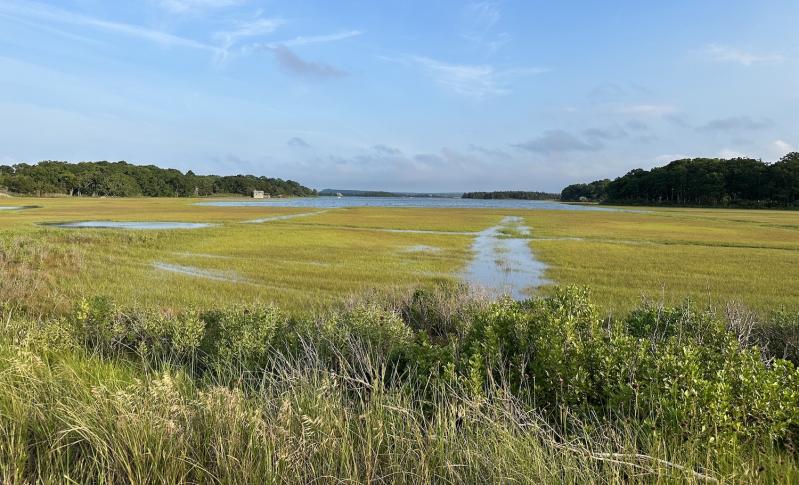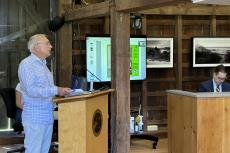Salt marsh areas of Accabonac Harbor could see a restoration effort beginning next fall, if the Nature Conservancy’s proposal to the National Oceanic and Atmospheric Administration for the funding of five such projects on Long Island is accepted.
John Aldred of the East Hampton Town Trustees briefed his colleagues on Monday on the proposal to implement salt marsh adaptation and resiliency teams, or SMARTeams, at Accabonac Harbor as well as in Shinnecock Bay adjacent to the Shinnecock Nation property, Hempstead Bay, Beaverdam Creek-Bellport Bay in Brookhaven Town, and the Mashomack Preserve on Shelter Island.
“Recent revelations suggest that historic alterations to salt marshes for agricultural purposes are exacerbating the effects of sea level rise and accelerating salt marsh loss,” according to a project description. The SMARTeams approach “uses innovative research and analysis to identify historic alterations in the marsh and works with local stakeholders through a hands-on training exercise to develop their capacity to design and implement holistic and minimally invasive restoration plans.”
The Accabonac marsh, Mr. Aldred said, is “the most advanced of all the properties in terms of background work.” For several years, the trustees have participated in efforts to monitor the marsh for mosquito larvae, allowing the Suffolk County Department of Public Works’ Division of Vector Control to reduce and more accurately target its application of larvicide to control mosquito populations.
A photograph of one mosquito breeding area in the marsh was depicted in Mr. Aldred’s PowerPoint presentation. “That’s an agricultural embankment that was built many, many years ago to use the land . . . for agricultural purposes,” he said. “It’s not allowing that area of the marsh to drain properly, so it’s become waterlogged and holds water. It’s an ideal spot for puddling to form and support the mosquito larval process.” The site is one example of areas that would be slated for restoration to allow better drainage, he said.
Field teams would be trained to develop a restoration plan for up to 100 acres of salt marsh habitat. To determine how the proposed restoration efforts improve a salt marsh’s capacity for flood protection, marsh elevations and vegetation density would be measured before and over time after the restoration.
For Accabonac Harbor, changes in marsh elevations would be monitored and vegetation cover would be tracked with photo stations, drone imagery, and fixed vegetation lines of study on the ground to determine the success of the restoration, Mr. Aldred said. Water level loggers that also measure salinity would be deployed to track hydrological changes to help the field team understand how the marsh is responding to the restoration and make adjustments to promote vegetation and elevation growth.
Should the project be funded, a project coordinator will be hired, contracts finalized, a schedule set, sites to be surveyed for birds with the U.S. Fish & Wildlife Service and the National Audubon Society determined, and a Federal Aviation Administration license and training to operate a drone obtained, Mr. Aldred said. The fall of 2024 to the fall of 2025 would see an implementation workshop at Accabonac Harbor, prerestoration monitoring, the first phase of restoration activities, and a workshop for all field teams.
Monitoring and adaptive management, including the second phase of restoration activities, would follow in the second year, spanning the fall of 2025 to the fall of 2026. A third year would see continued monitoring and adaptive management, and the completion of the site’s restoration. The field team would then identify the next marsh restoration site.
Mr. Aldred told his colleagues that he hoped to know whether NOAA would agree to fund the projects by the spring.




